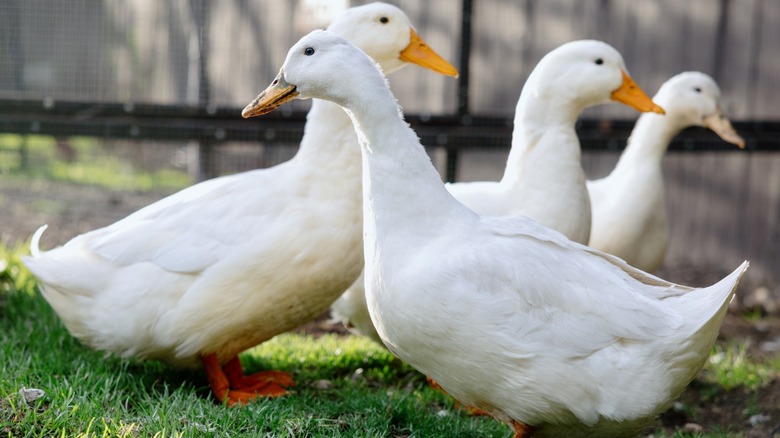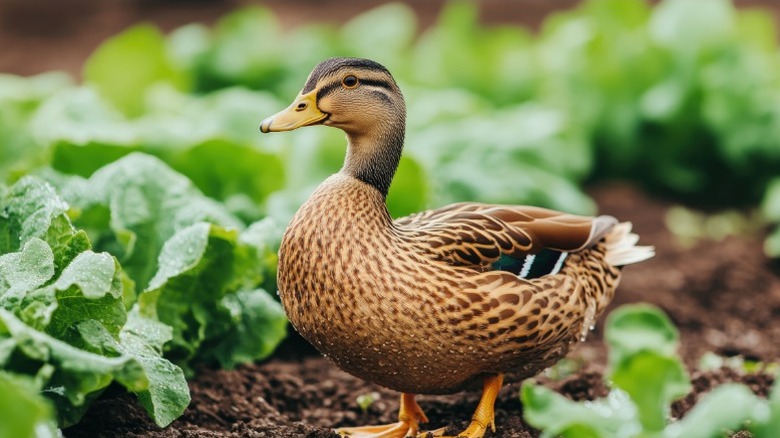Avoid These Garden Mistakes When Using Ducks For Pest Control
We may receive a commission on purchases made from links.
If you're struggling with managing pests, a few ducks might be the solution. For example, these adorable birds could be the answer to your slug problem. Ducks offer many benefits to the garden as pest control partners. However, if you want to keep ducks for this purpose, make sure you don't make big mistakes when it comes to their management and your garden's protection. You absolutely want to avoid two main mistakes: not protecting your young seedlings and allowing your ducks access to toxic plants. If you remember to follow these guidelines, you will have happy ducks and a thriving garden space.
Keeping ducks for garden pest control can be rewarding but frustrating without proper preparation. Have a plan to protect your tender seedlings from being squashed. Ducks can easily trample over young seedlings and vining plants in their zeal to reach bugs and slugs. Use fencing and plant borders to keep ducks out of certain areas. Be aware that your ducks might try to eat the plants you are trying to grow in your garden, too. Before deciding to use pest-eating ducks, consider the importance of hygiene. Consider the possible risks of unwanted pathogens impacting vegetation and soil if you allow them free range in garden beds with edible plants.
Keep your ducks away from harmful plants
The goal of allowing ducks in your garden is to eat pests that damage your plants. To that end, you absolutely do not want your feathered friends to eat something that could harm them. Growing toxic plants is a common thing you may be doing that could actually hurt birds like domesticated ducks. Many common garden plants can be toxic for ducks. For example, members of the nightshade family (tomatoes, peppers, eggplants) contain solanine, a harmful chemical. It's best to avoid letting them feast on green, unripe tomatoes or the stems and leaves of pepper plants. It's best to supervise your ducks when they are let out of an enclosure so you can watch for predators and make sure they're only eating pests! Your ducks might not be interested in chewing on any of these plants, but it's vital that you know what poisonous plants you inadvertently could be exposing them to.
Many types of perennial plants can be detrimental to ducks, too. Shrubs like azaleas and hydrangeas are highly dangerous, as well as the leaves and stems of clematis vines. Although you can feed monarch butterflies with regal milkweed (Asclepias spp.), it is very poisonous to domesticated ducks. Similarly, the popular hummingbird plant cardinal flower (Lobelia cardinalis) has lobeline, which is bad for ducks. Consider using fencing to mark off-limits to these dangerous perennials when your ducks are out. A movable fence, like this Amazon Basics Foldable Octagonal Playpen, can also help corral your ducks in specific spaces to keep them away from poisonous plants and out of your lettuce.

